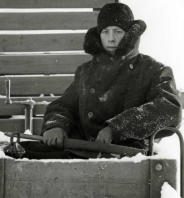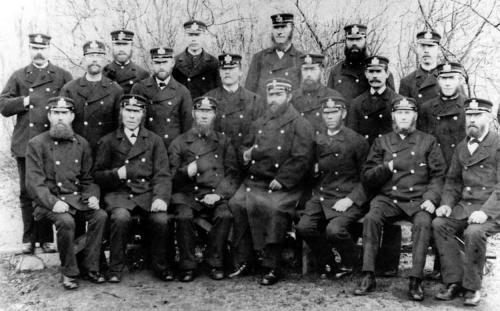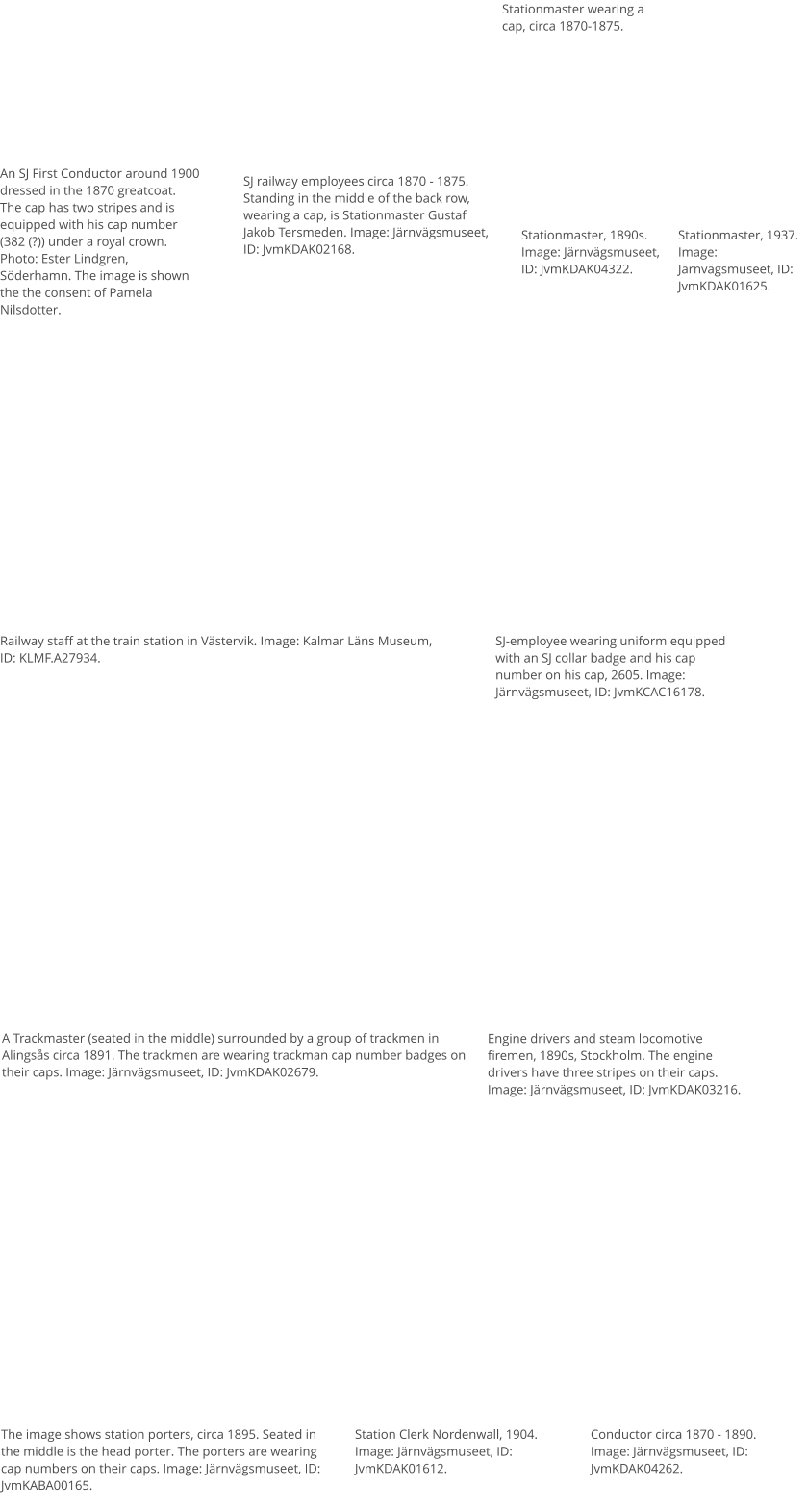
Copyright © Hans Högman 2021-03-18
History of the Swedish Railways (3)
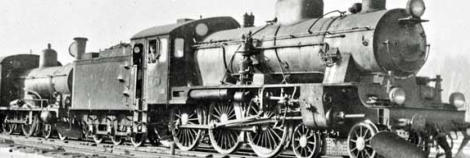
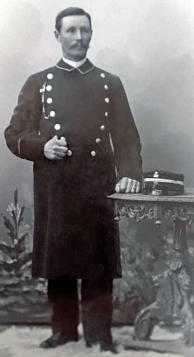
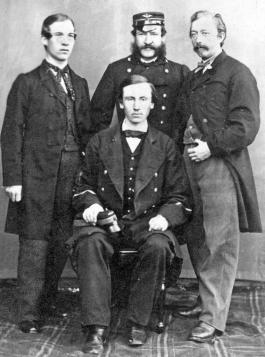

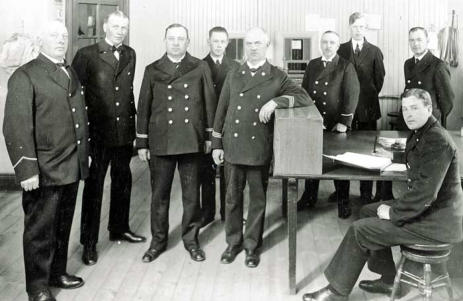
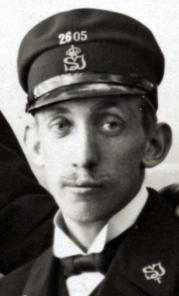
Swedish State Railways, SJ
Railway Occupations
There have been many different railway occupations
over time, some still exist, and some are gone. Two
occupations that no longer exist are locomotive
firemen and brakemen. Below is a description of the
most common historic railway occupations:
The Stationmaster (Swe: Stationsinspektor or short
Stins) is the person in charge of a railway station. In
the US the role is commonly termed Station Agent.
The station master is responsible for the management
of other station employees and holds responsibility
for safety and the efficient running of the station. In
Sweden, the term was historically employed across
larger stations, 1st to 4th class stations. The term for
the head of minor country stations (5th to 7th class
stations) in Sweden was Assistant Stationmaster (Swe:
Stationsmästare). The number of
other employees at a railway
station varies according to size.
The image to the right shows a
stationmaster (Swe: Stins) with a
signal spade, circa 1950. Photo:
Eric Lundquist. Image:
Järnvägsmuseet, ID:
JvmKBDN00909.
The Station clerk or Booking
clerk (Swe: Stationsskrivare) was responsible for ticket
sales and financial auditing at a railway station. There
were booking clerks and senior booking clerks.
The Station porter (Swe: Stationskarl) was
responsible for platform safety, luggage
transportation, and cleaning, and often ancillary staff
in catering, left luggage, and maintenance roles. The
porters were part of the traffic department and
subordinated the head porter (Swe:
Stationskarlsförman). When a train arrived at the
station, the porters opened the train door and called
out the name of the station. They helped the arriving
passengers with their luggage and carried the luggage
to the luggage room. loading and unloading of goods
were also taken care of by the porters. At smaller
stations, they also had the role of signalmen. A
signalman or signaler is an employee of a railway
transport network who operates the points and
signals from a signal box to control the movement of
trains. Porters were the most junior grade of station
staff.
In the US, the term porter had a somewhat different
meaning of a member of staff attending to passengers
on board trains, particularly in sleeping cars, a role
known as steward in most other countries.
The train driver, engine driver, or locomotive
driver (Swe: Lokförare) is a person who drives a train.
The driver is in charge of, and responsible for
operating the engine, as well as the mechanical
operation of the train, train speed, and all train
handling. The driver was also responsible for minor
maintenance tasks so he would be able to drive the
train to a workshop for repairs if there was a problem.
He was supposed to have a good knowledge of his line
so that he could avoid
unnecessary sudden breaking.
The first female engine driver in
Sweden was employed in 1977.
The image to the right shows an
engine driver in his locomotive
waiting for the signal to start,
circa 1950. Image:
Järnvägsmuseet, ID:
JvmKBDB02085.
The locomotive fireman (Swe: Lokeldare) is a person
whose occupation was to tend the fire for the running
of a boiler in a steam locomotive and was
subordinated to the engine driver. Much of the job
was hard physical labor, such as shoveling fuel,
typically coal, into the boiler's firebox. The firemen
were not usually responsible for initially preparing
locomotives and lighting their fires; a locomotive
boiler takes several hours to heat up.
He would clear the ash from the firebox ashpan
before lighting the fire, adding water to the engine's
boiler, making sure there was a proper supply of fuel
for the engine aboard before starting journeys,
starting the fire, raising, or banking the fire as
appropriate for the power needed along particular
parts of the route, and performing other tasks for
maintaining the locomotive according to the orders of
the engine driver. When the fireman wasn’t powering
the firebox, he was attending the locomotive’s brake
wheel being prepared to put the brakes on to the
orders of the engine driver.
Both the diver and the fireman had to keep a close
watch on possible signals
from trackmen along the
tracks or from the
stationmaster at a train
station.
The image shows a fireman
in a steam locomotive in
1956. Photo: Lennart Nilsson
(1922-2017). Image:
Järnvägsmuseet, ID:
JvmKBDB16275.
A brakeman (Swe: Bromsare) was a rail transport
worker whose job was to assist the braking of a train
by applying brakes on individual wagons. In the UK,
the brakeman was more often referred to as the
guard.
The brakemen were responsible for assisting with
braking a train when the engine driver wanted the
train to slow down, stop, or contrary start. The brakes
were manually operated with brake handles or wheels
applied by the operation of a screw and linkage to
brake blocks applied to wheel treads.
The brakemen traveled in crude shelters outside the
vehicles, in Swedish known as “bromssäte, bromsbås or
bromshytt”. Bromssätet (brakeman’s seat) was merely
an outdoor seat for the brakeman. The bromsbås were
similar to the seat but a covered seat. It looked like a
nesting-box on the exterior of the wagon.
The job as a brakeman was somewhat monotonous
but also arduous. The brakeman had to work in cold
as well as wet weather without any chance to change
clothes. In winter they were
exposed to sharp frost and
strong winds and many of
them got bad health over
time.
The image shows a train
brakeman in his seat dressed
in a fur winter coat in 1946.
Photo: Sture Gewert, 1946.
Image: Järnvägsmuseet, ID:
JvmKDAF04690.
The conductor (Swe: Konduktör): A conductor (US) or
guard (UK) is a train crew member responsible for
operational and safety duties that do not involve the
actual operation of the train/locomotive.
The conductors were part of the traffic department
and subordinated the stationmaster. Before the
conductor’s work shift began he had to report to his
stationmaster and receive orders for his shift aboard
the train. The conductor was responsible to make
sure that the tail and side lanterns of the train were
cleaned and in working order. A conductor's duties
also included ensuring that the couplings between
cars were properly set and that the sliding doors on
the goods wagons were properly closed.
The train left the railway station on the signal of the
stationmaster, thereafter it was the conductor who
had the responsibility for passengers and goods.
During the train ride, the conductor had to watch for
possible signals from the engine driver.
The Trackmaster (Swe: Banmästare) was part of the
track department and he was responsible for a
specific section of the route he was assigned to. His
superior was the track engineer (Swe: Baningenjör).
Several trackmen subordinated the trackmaster, were
each responsible for a specific stretch of the
trackmaster’s section and they reported to the
trackmaster. The trackmaster’s duty included ensuring
that the tracks in his section of the line were in good
working order so trains could pass safely. He,
therefore inspected his section regularly and during
these inspections, he also made sure that the
trackmen had fulfilled their duties.
A platelayer (UK) or trackman (US) is a railway
employee whose job is to inspect and maintain the
permanent way of a railway installation. The Swedish
term is “banvakt” which means “track tender”.
Therefore I will use the US term trackman in this
article.
The Swedish railways employed a large number of
trackmen whose responsibility was to supervise and
maintain a designated part of the railway line
generally watching for wear and tear. Not only the
tracks were supervised by trackmen but also the
embankment and the strip of land on both sides of
the embankment. The trackmen were obliged to
inspect their respective part of the railway line at least
once a day. This was performed either by foot or on
an inspection trolley (Swe: dressin). Each trackman was
assigned a specific stretch of the line and each stretch
covered between 2.5 km (1.6 mi) and 10 km (6 mi) or
more. Each trackman was working from an assigned
railway trackman cottage (Swe: banvaktsstuga) located
on their respective part of the railway line. If there was
a minor defect, the trackmen had to do the repairs
between two trains passing the spot. Major defects
were imitatively reported to the trackmaster.
Examples of defects are; ground frost displacing the
tracks, rail breaks, rails buckled in the sun, trees that
had fallen onto the tracks, etc. Bad sleepers were
regularly being changed, as were damaged fishplates
(joint bars), bolts, spikes, etc.
The trackman’s duty included also watching passing
trains to ensure that they were in good running order,
lighted lanterns, etc. The system of having trackmen
supervising the tracks was finally
abolished around 1960.
The image shows a railway
trackman on an inspection
trolley beside his trackman
cottage, no 122 in Wästra
Hästbo. Photo: Josef Eriksson.
Image: Länsmuseet Gävleborg,
ID: XLM.Torsåker1129.
A railway gatekeeper was tending the gates at a
railway crossing. Formerly, the crossings were having
manually operated gates. The tenders of such a gate
were called gatekeepers (Swe: Grindvakt). In good time
before a train was going to pass the crossing, the
gatekeeper’s duty was to close the gates for road
traffic. When the train had passed, the gates were
opened, now closing the tracks. Therefore, it was of
uppermost importance that the gatekeeper knew the
trains’ schedules. It was the gatekeeper’s duty to close
the gates for road traffic 10 minutes before the train
was passing the crossing and thereby gave a clear way
for the passing train. A gatekeeper's duties also
included watching the trains’ last car for the “extra
train is coming” signal. The gatekeeper then had to
keep the gates closed for road traffic.
If a crossing was close to a trackman cottage, the wife
of the trackman could earn some extra money for the
family as a gatekeeper.
Later, level-crossing barriers were introduced.
The image shows a female railway gatekeeper at a
crossing in Söderala in 1922. Image: Järnvägsmuseet,
ID: JvmKDAA16802.
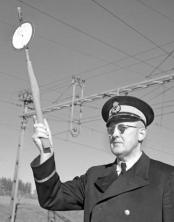

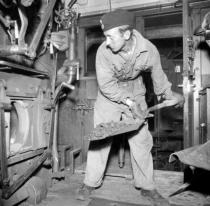
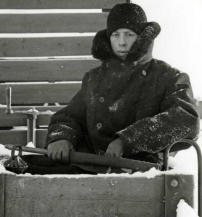
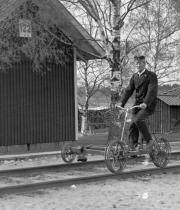
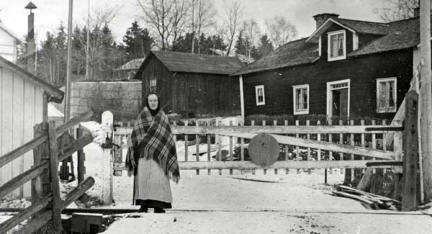
Uniforms of the Swedish State Railways (SJ)
The railway staff wore a uniform. As seen above,
there were many different railway occupations and
some of these occupations were involving greasy and
grimy tasks. Therefore, not all railway staff wore the
uniform regularly but protective clothes. However,
usually, they always wore a dress cap.
The earliest information about uniforms of the
Swedish State Railways (SJ) is from January 1857
when buttons for the uniform were ordered from
Denmark. In a newspaper, Handelstidningen, from
1859, there is an article describing the SJ uniform.
The uniform was dark blue with white piping. The
silver buttons had an imprinted locomotive. The
peaked cap had silver stripes marking the rank. The
Stationmaster wore three parallel stripes with an
embroider locomotive in-front on his cap. The First
Conductor wore two stripes while the Second
Conductor wore one. The Station Clerks wore 2
stripes, as did the Assistant Stationmasters.
It was allowed to wear the cap to civilian clothes.
In 1864, the introduction of the uniform was
completed for all railway staff with SJ. However, there
was one exception, the engine drivers weren’t
wearing uniforms until the 1870s.
On 29 January 1864, Gerhard Lagerstråle, Minister of
Public Administration, signed the first Royal Decree
regarding rules and regulations for the uniforms of
the Swedish State Railways.
A winged wheel under a Royal
Crown is the logotype of the
Swedish State Railways. See
the image to the right.
In 1864, the Stationmasters received a red ribbon on
their caps as a sign of their professional status.
Under the rules of 5 September 1865, the
Stationmasters adopted gold stripes, with a width of
16 mm respectively 13 mm, depending on the size of
the railway station.
The button to the left has an
imprinted B-class locomotive, worn by
station porters, trackmen, and other
petty employees, 1860s. Image:
Järnvägsmuseet, ID: Jvm13820-1.
Below is a summary of the uniform regulations in use
during the first 50 years of the Swedish State
Railways (SJ):
The 1870 Uniform Regulations:
On 5 April 1870, a new uniform regulation for the SJ
railway staff was adopted. First Conductors (Swe:
Överkonduktör) kept their two silver stripes on the
cap but also their employment number (cap number)
in white under a royal crown worn in-front of the cap.
Second Conductors (Swe: Underkonduktör) wore
one stripe.
The image to the right shows a
peaked cap with two stripes and
a serial number under a royal
crown for a Second Conductor
with SJ, model m/1870. Below
the stripes is a cockade.
First Trackmasters (Swe: Förste banmästare) wore
two silver stripes on their caps, Second Trackmasters
one. Head Porters (Swe: Stationskarlförman) wore
one wide stripe while Porters their respective
employment numbers in silver under a royal crown.
Trackmen (Swe: banvakt) wore a so-called trackman’s
badge on their caps in the shape of a shield stamped
out with their employment numbers (cap number)
under a royal crown.
The image to the left shows a
trackman’s cap with the badge in-
front of the cap. Image:
Järnvägsmuseet, ID:
JvmKDAK00233.
The greatcoat was equipped with a folding collar,
roundish cuffs, peaked pocket flaps, and white piping
on the collar, pocket flaps, and cuffs. The greatcoat
was double-breasted with 7 buttons in each row. The
trousers were also equipped with white piping.
Under the regulation of 1876, Stationmasters and
First Conductors were both wearing two stripes on
the cap, however no employment numbers. Instead,
they wore a white, winged wheel of metal.
In 1878, the insignias on their sleeves stating their
professional status were changed from stripes to
chevrons pointing upwards.
In 1889, Station clerks received a 5 mm wide stripe
on caps and sleeves. First Trackmasters now wore a
winged wheel and two 10 mm wide silver stripes.
The image shows the type of cap
used between 1900-1909 by
Station Clerks. Image:
Järnvägsmuseet, ID: Jvm02520.
The 1909 Uniform Regulations:
The previous cockade on the cap
of the locomotive personnel was
abolished and replaced in 1901 by a new cockade
made of blue enamel with a winged wheel, three
crowns, and thunderbolts.
Under the 1909 regulations, the silver-colored
buttons were replaced with golden ones. from 1909,
all personnel wore a winged wheel under a royal
crown on their caps. Below the cap badge was the
national blue and yellow cockade worn.
The image to the left shows the blue
cap cockade worn by engine drivers
from 1901. Image: Järnvägsmuseet, ID:
Jvm51657-1.
The image to the right
shows a golden uniform
button under the 1909 regulation used
between 1909 and 1953. Image:
Järnvägsmuseet, ID: Jvm13701-1.
Some railway personnel also wore a
golden cap number (employee number) on their
caps. A railway cap number identifies petty railway
personnel. Special collar badges were used to show
the department a staff member was being part of.
Further, Stationmasters wore a 20 mm wide bright
red ribbon around the cap.
A special summer uniform was also adopted, made
of white cloth with dark blue insignias or stripes.
Higher ranked railway officials no longer wore rank
insignias on their caps. Instead, they wore a black silk
ribbon with an attached badge with a winged wheel
under a crown, oak leaves, and the letters SJ around
the caps.
The 1921 Uniform Regulations:
The 1921 uniform regulations didn’t bring many
changes. However, there were some changes, the cap
numbers were abolished as was the cap cockade for
train serving personnel. Also, for higher-ranked
officials, the winged wheel and the cockade were
removed and replaced with an embroidered cap
badge with a winged wheel encircling the
Swedish national Three Crowns under a
Royal Crown.
The image to the right shows the 1921 cap
badge with a winged wheel encircling the
Swedish Three Crowns under a Royal
Crown. Image: Järnvägsmuseet, ID: Jvm23644-1-2.
In 1929, there were some minor changes regarding
the number of stripes and their width for the various
railway ranks.
The 1921 uniform regulations were used until 1954
when a new uniform regulation was issued.
Private Railways in Sweden:
The railway staff with the private railways also wore
uniforms. At large, these uniforms were like the
uniforms worn by the SJ staff personnel. Of course,
there were differences between the many railway
companies. However, rank and service insignias
usually were like the ones used by the state railways.
The SJ logotype, the winged wheel under a royal
crown, was only used by SJ for obvious reasons.
Instead, the private railways used a similar symbol, a
winged wheel under a griffin head and the buttons
worn on the uniforms had an imprinted locomotive
instead of the SJ winged wheel.
Images of Uniforms worn by the SJ Railway Staff
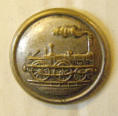

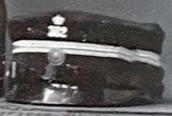

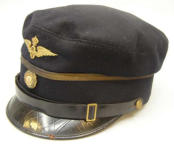
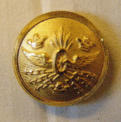

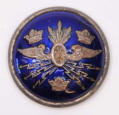
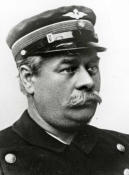
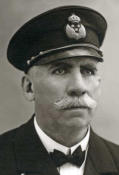
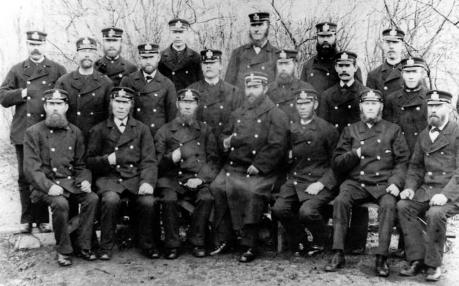

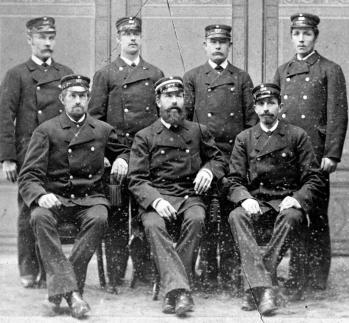
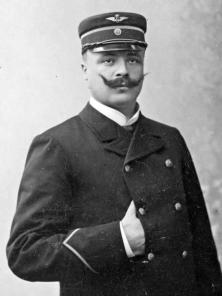


Related Links
•
Railway History, part-1
•
Railway History, part-2
•
Swedish State Railways - Locomotives
•
Iron Ore Line
•
Railway History - Images
•
Maps of the Swedish Railway System
•
History of Swedish Log Driving
Source References
•
Staten, järnvägarna och den regionala
utvecklingen i Sverige 1840–1890, Agaton Sten,
2015, Umeå Universitet.
•
Den glade rallaren? Norrbottniska rallares syn på
sina arbets- och levnadsvillkor, Per-Jonas Pihl
2016, Luleå Tekniska Universitet.
•
Boken “En rallares levnadsminnen”, av Samuel
Magnusson Svanbäck; nedtecknade av Herbert
Malmback, 1931.
•
Boken: “Banbrytare. Äventyr och upplevelser under
ett 100-årigt järnvägsbyggande i Sverige”. Manne
Briandt. Kristianstad 1959.
•
Sveriges järnvägars historia, Populär Historia, 13
september 2006 av Niklas Ingmarsson,
publicerad i Populär Historia 7-8/2006 .
•
Rallarna i Sverige banade väg för industrialismen,
av Mats Utbult, publicerad i Populär historia
11/2009.
•
Wikipedia
•
Järnvägsmuseet (Railway Museum in Gävle,
Sweden)
Top of page















































